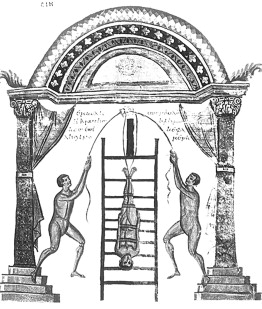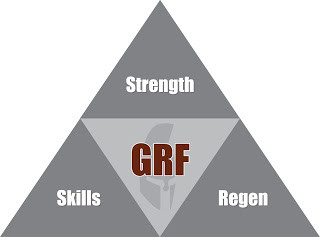
Around 400 B.C., the “father of medicine”, Hippocrates, was the first physician to describe manipulative techniques using gravity, for the treatment of scoliosis. In this case, the patient was tied to a ladder and inverted. The second technique he described involved the use of a table with various straps, wheels, and axles enabling traction to be applied to joints. In his book, Hippocrates noted that this treatment should be followed by exercises.
These manipulations, also done by chiropractors and therapists, are a part of Joint Mobilization. But some of these Mobilization can actually be done on your own, which is critical because frequency of treatment is more important than duration.
This concept of self maintenance and techniques of Joint Mobilizations have been popularized recently by a great therapist/author, Kelly Starrett, and his blog Mobility Wod. We will take a different perspective on choosing the best route for athletes to enhance their skills.
Joint Mobilization is a type of passive movement of a joint. Motion produced by a force that is external to the muscle or muscle group is normally responsible for the movement. Joint Mobs are classified by five ‘grades’ of ranges of motion. Roman numerals are generally used in labeling the grades of motion (i.e. Grades I to V). Grade V is generally the manipulation used by chiropractors and therapists….and those of you hanging upside down off ladders.

A Movement Signature allows us to evaluate athletes’ movement efficiency based off force production ability (GRF), and subsequently prescribe specific training protocols based on each individual’s needs. Strength, the sheer ability is the greatest contributor to improved performance. But strength is only a part of improving athletic performance.
When athletes talk about needing to work on their skill technique, they are really just talking about angles. Sprint technique, agility technique, rotational power, approach jump technique; these are all just different planes of movement that require improved angles of force production.
We use a series of joint mobilizations to improve an athlete’s fundamental ability to create angles, the starting point for other movement skill progressions like wall drills and lateral reach. These simple self-mobilization techniques enable athletes to manage range of motion and body position on a daily basis. This is key for athletes with some of the more “extreme” Movement Signatures.
Ankle Mobs – Great for “Tense” athletes who overuse their anterior chain
Hip Mobs – Great for “Hinge” athletes who have overuse their hip musculature
Shoulder Mobs – Great for “Long” athletes who overuse the upper body for momentum

Added tension of the band creates external forces to improve positioning of the joint in the capsule
The band forces increased awareness of stability and position of adjacent body segments
Quality is the most important component – maintain posture in order to focus the mobilization at the targeted joint
Gently work through end range of motion for 1-2 minutes on each side
Once athletes have developed a healthy Movement Signature and the fundamental ability to create angles, they will be better prepared to work on movements that are specific to their sport like sprinting, rotational power, and agility. It is easy to get distracted by the newest exercise variation that you saw on youTube, but at the end of the day everything that you do must be evaluated in regard to its ability to improve force production and angles.